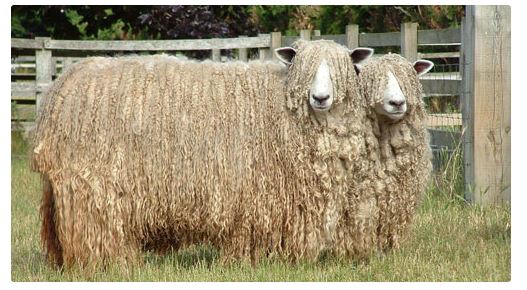The Evolutionary Shift of Domestic Sheep and Human Intervention
Domesticated sheep, particularly the Merino breed, are no longer equipped to handle their wool growth without human assistance. Unlike their wild ancestors or primitive relatives, Merino sheep have been selectively bred over centuries to produce wool continuously. This genetic modification has made them entirely dependent on regular shearing by humans.
In nature, wild sheep shed or rub off excess wool seasonally, a trait that helped them survive in fluctuating climates. However, the Merino, valued for its exceptionally fine and dense fleece, has lost this natural mechanism. The absence of seasonal wool shedding presents a significant welfare challenge if they are not managed properly.
Consequences of Not Shearing: Health Risks and Animal Welfare
If a Merino sheep is left unsheared, the consequences can be severe and even life-threatening. The fleece will continue to grow throughout the year, trapping dirt, moisture, feces, and parasites. Overgrown wool leads to:
- Heat stress, particularly in warmer climates, as the thick coat prevents proper temperature regulation.
- Restricted mobility, where the sheer weight and volume of the fleece impair the sheep’s ability to move freely.
- Flystrike (myiasis), a painful condition where flies lay eggs in the moist fleece, and the hatching larvae burrow into the sheep’s skin.
- Skin infections, due to accumulated moisture and bacteria.
- Vision impairment, if the wool grows over the eyes.
- Predation risks, as the animal becomes slower and more vulnerable.
In extreme cases, sheep may collapse under the weight of their own wool, experience joint pain, or suffer from ulcers and open wounds hidden beneath dense fleece layers.
The Case of Chris: A Real-World Example of Overgrown Wool
One of the most well-documented incidents of wool overgrowth was the case of Chris, a Merino sheep found in Australia in 2015 after being lost in the wild for approximately five years. When he was discovered, his fleece weighed a staggering 40 kilograms (88 pounds). Chris could barely walk, and his fleece was so thick it posed an immediate threat to his life.
Veterinarians were called in to shear him under sedation. The wool removed from Chris set a world record for the heaviest fleece ever sheared from a single sheep. This case vividly illustrated the absolute necessity of human shearing intervention for domesticated breeds like the Merino.
Shrek: Another Iconic Example from New Zealand
Similarly, in 2004, Shrek, a New Zealand Merino sheep, gained global attention after evading shearing for six years by hiding in caves. When found, Shrek’s fleece weighed approximately 27 kilograms (60 pounds). Just like Chris, Shrek’s mobility and health were compromised, and his story underscored the inherent problem with non-shedding sheep breeds being left without care.
Natural Breeds That Can Shed Their Wool
Not all sheep are created equal when it comes to wool management. Certain primitive sheep breeds, such as the Soay and Boreray from the Scottish islands, still retain their natural ability to shed their wool seasonally. These breeds have not undergone the same intensive selective breeding as Merinos and can survive without human shearing. Their wool naturally loosens and falls off or can be plucked manually in a process known as “rooing.”
This significant distinction between natural-shedding and domesticated wool-producing breeds is essential in understanding why modern sheep cannot survive without human care.
Why Continuous Wool Growth Exists in Domesticated Sheep
The Merino breed has been genetically enhanced for maximum wool production, catering to the global textile industry’s demand for fine, soft, and durable wool. Continuous wool growth provides greater fleece yields per year, which translates into higher economic returns. However, this commercial advantage comes at the cost of animal autonomy, making regular shearing a crucial welfare practice.
Ethical Responsibilities of Sheep Owners
Owning and managing Merino or other domesticated sheep breeds comes with a moral obligation to ensure their health and comfort. Shearing is not merely an economic activity—it is a vital husbandry practice.
Sheep should be shorn at least once a year, with some requiring more frequent shearing depending on climate, fleece growth rate, and wool density. Proper shearing must be conducted by trained professionals to prevent injuries and minimize stress on the animal.
Additionally, post-shearing care is essential. Sheep may become vulnerable to sudden temperature changes or sunburn, especially if their fleece was exceptionally thick prior to removal.
The Role of Shearing in Sustainability and Animal Welfare
From a sustainability perspective, proper shearing supports both environmental and animal welfare goals. Overgrown fleeces harbor parasites and dirt, and as the animal moves less, its droppings accumulate in confined areas, creating unhygienic conditions for both livestock and humans.
Maintaining healthy sheep through timely shearing ensures:
- Cleaner grazing pastures.
- Lower veterinary costs due to fewer infections.
- Improved wool quality and yield.
- Longer and healthier lives for the animals.
A Long-Term View: Balancing Wool Production and Animal Needs
As wool continues to be a renewable and biodegradable textile resource, it is imperative to strike a balance between production and ethical treatment. Innovations in breeding and animal care should focus not only on maximizing output but also on preserving animal health and autonomy wherever possible.
Some emerging research suggests exploring hybrid breeds that can offer the benefits of Merino-quality wool while retaining partial shedding capabilities. Until such developments are viable at scale, routine shearing remains non-negotiable for all highly wool-producing breeds.
Conclusion: Human Care Is Essential for Domesticated Sheep Survival
Sheep like the Merino are not equipped to manage their wool without human help. Cases like Chris and Shrek offer stark reminders of what happens when domesticated sheep are abandoned or lost. The inability to shed wool naturally leads to painful, debilitating, and often deadly conditions.
Through responsible animal husbandry, including timely and humane shearing, we ensure that sheep not only live but thrive. The Merino’s luxurious wool is a result of human ingenuity—and with that comes the responsibility to provide the care and attention these animals now depend on.
Regular shearing is not optional—it is essential.




